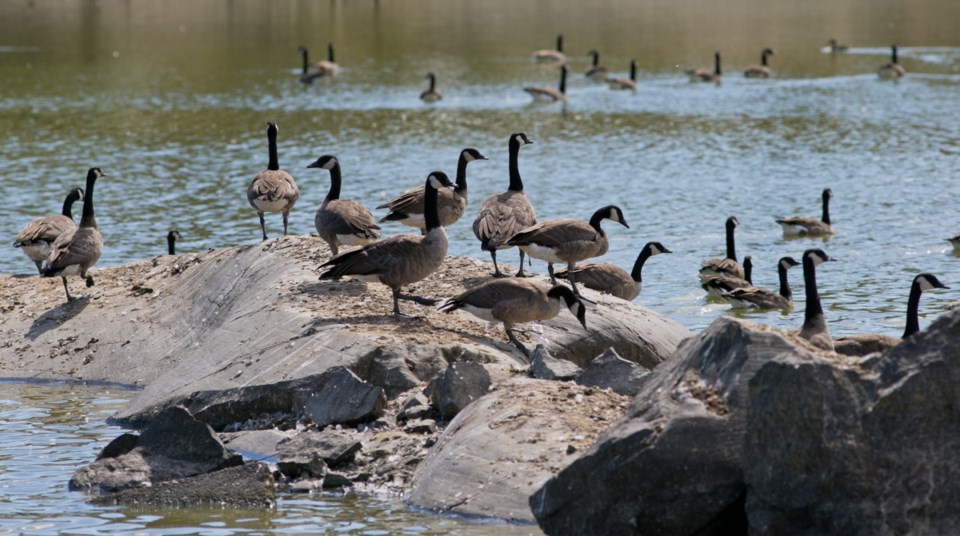A simple change in municipal firearms discharge bylaws could allow for the shooting of thousands more crop-destroying Canada geese, says Juan de Fuca Electoral Area director Mike Hicks.
If left unchecked, the region’s population of 6,000 non-migratory Canada geese could grow to an estimated 60,000 over the next 20 years, Hicks told Capital Regional District directors.
“These 6,000 geese are already causing tremendous harms to our farmers’ crops; 60,000 will be absolutely devastating,” Hicks said.
But if rural municipalities amended their bylaws to allow landowners already possessing crop-protection permits to hunt on their lands, a significant reduction could be made in the number of Canada geese, Hicks said.
Farmers with crop-protection permits are not allowed to use blinds or decoys and they can not eat the geese they shoot.
Hicks wants that to change.
“The big difference is that the hunters and farmers could hunt efficiently using decoys and blinds and they could eat the geese, which would be in prime shape.”
Hunting would be allowed during four, two-week openings between September and March, not just during moulting season, when the geese tend to be skinnier and are unable to fly.
The two-year crop-protection permits issued to farmers, golf courses and airports allow holders or their nominees to shoot between five and 10 geese per week.
“There are three methods of managing the numbers of geese: one is addling the eggs — shaking the eggs,” Hicks said.
“The other is a federal and provincial government-sanctioned kill, which is more or less what the CRD tried to do last year.”
The third method is limited hunting with crop-protection permits issued by the federal Canadian Wildlife Service, he said.
While there are a few dedicated individuals addling eggs, the impact is small, Hicks said.
Organized kills can be accomplished only during moulting season, and can be expensive (as the CRD found out spending $31,200 to kill 43 geese) and unpredictable because the geese might not be where anticipated. Eating the culled geese is not permitted.
“Even if the law was changed [to allow culled birds to be used for food], the geese during moulting season are carrying the least amount of fat during the year and they are not very good to eat,” Hicks said.
The existing program “is not intended to reduce the numbers, but it’s a method for the farmers to scare away or haze geese,” Hicks said.
“They basically shoot a goose. It lies in the field. The other geese see it and they don’t come for a while. Then an eagle or a hawk comes and grabs the goose and it’s gone so they can shoot a few more the next week. The geese are hazed away and usually just go to a neighbouring field.”
At Hick’s urging, Capital Regional District directors have agreed to write to the municipalities of North Saanich, Central Saanich, Saanich, Metchosin and Sooke urging them to amend their firearms bylaw to allow any landowner (or nominee) to hunt Canada geese on their land, as long as they follow federal rules and have the proper permits. Hicks also plans to address each of the councils.



